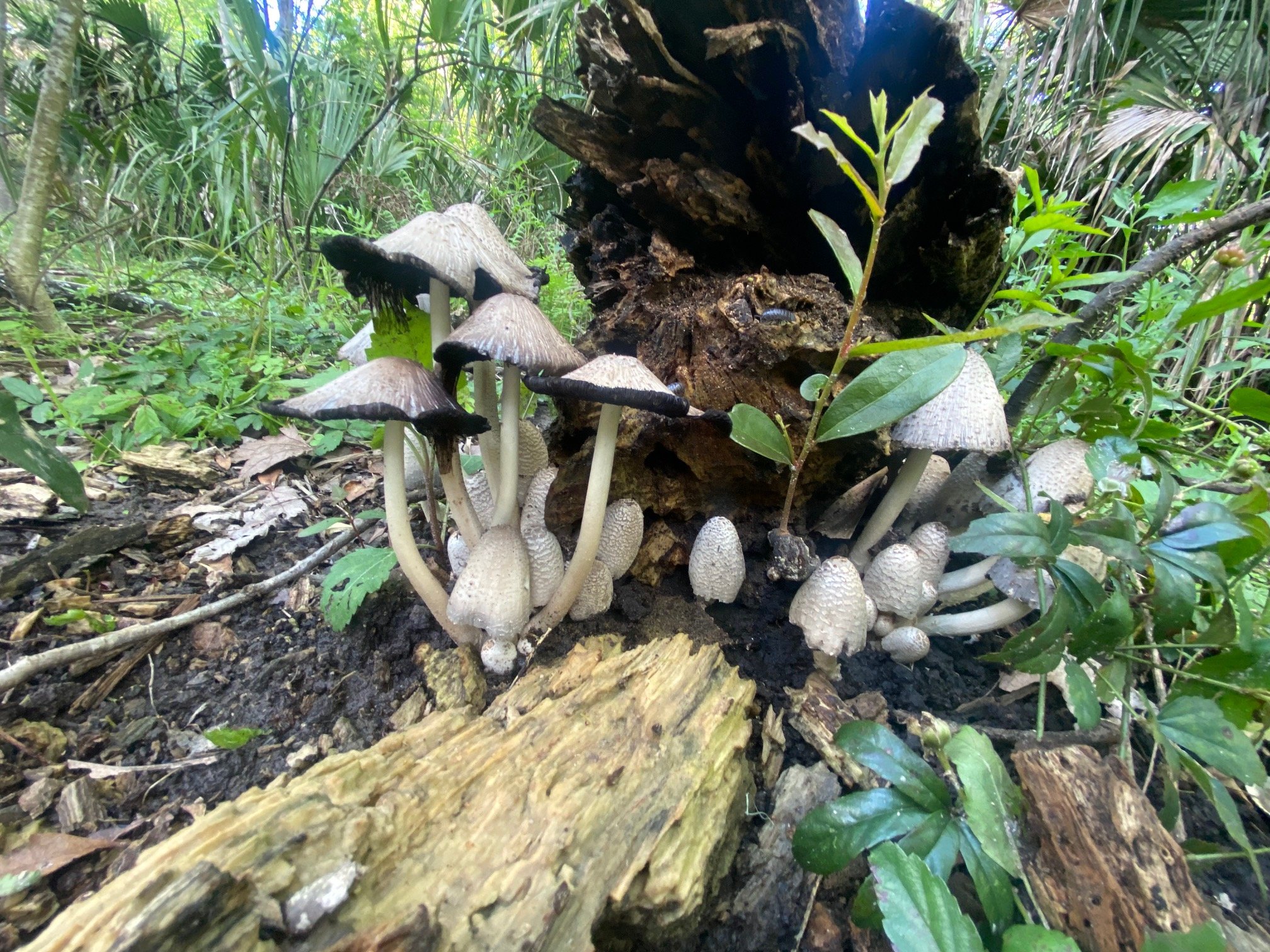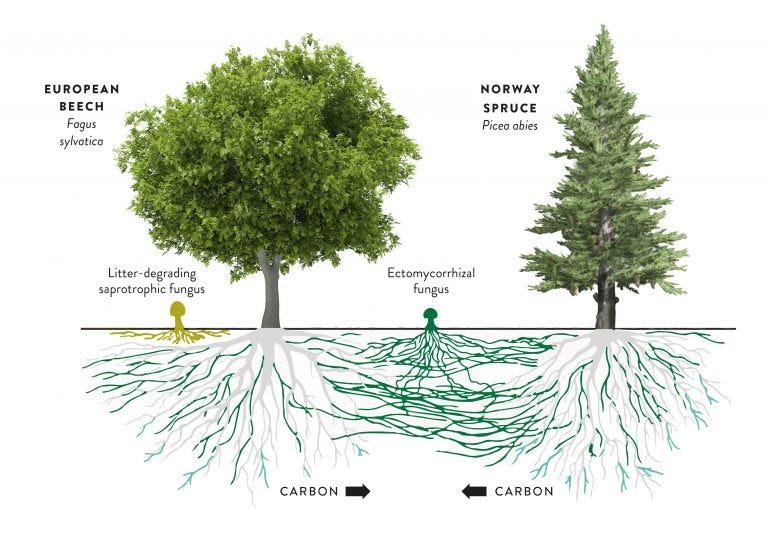THE SYMBIOTIC NATURE BETWEEN PLANTS AND FUNGI
Image credit: Crystal Floyd
If you've looked under a decomposing wooden log, underneath garden pots or rocks that have been sitting in the same spot for some time, you may encounter what initially resembles two-dimensional plant roots, but they're actually a mycorrhizal network of hyphae winding their way around, searching for nutrients, exploding to a microscopic sprint after a rainy day. Congratulations, you have fungi!
Image credit: Crystal Floyd
There is a connectivity between plants and fungi that's often referred to by mycologists (one who studies fungi), amateur and professional alike, as the "Wood Wide Web". There's a whole lot of science to unwrap with that and we're going to go through some of the basics for a better understanding of how fungi and plants help each other symbiotically. This partnership goes back 500 million years and is likely how the first terrestrial plants were able to survive and find nutrients in the primitive soil on a very tumultuous and chaotic world growing quickly with life.
A cool thing about fungi is that they can break down just about anything and create something different. In this early case, we are focusing on annihilation of rocks and other debris and creation of micronutrients for plants, specifically phosphorus and nitrogen. Fungal hyphae threads dance and bore through the medium and send those nutrients back to the waiting roots of the flora in a mycelial network. In return for this, the plants feed the fungus with sugary carbohydrates, creating a bond that leaves both fungi and flora taken care of with necessary sustenance.
Getty images
There are two types of ways that fungi connect to roots: ectomycorrhizal and arbuscular mycorrhizal.
In ectomycorrhizal, the mycelium grows a sheath around root tips, not penetrating the root cells, creating a point that is protected for nutrient transfer. This is common in a lot of forests or around trees in general and these are responsible for a lot of mushrooms that you may see(the mushroom is the reproductive organ of the fungi, sending spores flying as it opens to grow on). These are larger masses of networks.
The arbuscular mycorrhizal type is one to, like its name suggests, penetrate into the root cells and create arbuscules or vesicles to maximize nutrient exchange. You'll find these in a lot of farming crops, trees and grasslands. These fungi are much more widespread and common, being smaller networks and able to churn through soil faster.
Now back to the Wood Wide Web. This incredible finding is jaw dropping when you think about the health of your soil, plants and entire ecosystem. Studies show that the mycorrhizal networks under our feet allow plants to communicate with each other, signaling disease, danger or initiating defense mechanisms. Those same networks feed the soil too, creating healthy ground for other plants to grow in, which on a larger scale, becomes our entire ecosystem.
Life would be unimaginable without these tiny networks, and when the connections are there, the plants tend to do much better, just like our own communities.
Further reading on Wood Wide Web with references: https://aggietranscript.ucdavis.edu/the-wood-wide-web-underground-fungi-plant-communication-network/









